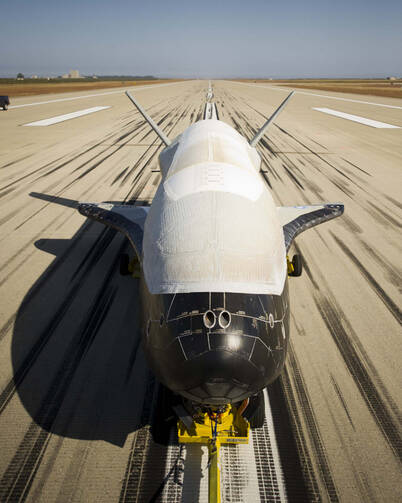If the rumors are true, today at Vandenberg Air Force Base, near Lompoc, California, the U.S. Air Force will land its robotic space plane X-37B after 22 months in orbit.
What—you didn’t know the Air Force had a “space plane”? That it was robotic (among other things it supposedly lands itself)? That it had been circling above us for the last 671 days?
That might be because the USAF has been using it and a second “Orbital Test Vehicle” for long-term top secret missions. Since 2010 the plane — basically the Happy Meal version of a Space Shuttle, just 29 feet long and with the payload bay of a pick up truck — has been sent into space three times for a total of 1356 days (or 3 years, 270 days, a.k.a. almost always).
A fact sheet produced by the Air Force says “the primary objectives of the X-37B are twofold: reusable spacecraft technologies for America’s future in space and operating experiments which can be returned to, and examined, on Earth.” Or translated into English, we’re so not telling. (And if those are the description of the primary objectives, one can only dream how they might describe the secondary or tertiary ones.)
Given the small payload and the amount of time spent in space, it could very well be that the X-37B is a laboratory for testing things like the long-term endurance of materials and computers in space.
But the fact that the program has, since 2004, been in the hands of the Defense Advanced Research Projects Agency (DARPA), does not instill confidence. On its website DARPA describes its purpose with this terrifying phrase: “Creating and Preventing Strategic Surprise”. (Because “First Place in Mutually Assured Destruction” is so 1985.)
Among DARPA's current ‘surprises’ are “Combat Zones that See”, the use of huge networks of surveillance cameras to track literally everything that moves in a city; the “Aerial Reconfigurable Embedded System,” a flying armored car; and —true story—remote-controlled insects. (What could possibly go wrong?)
So basically the good news in space travel is, we’ve got a space plane!
The bad news is, it’s being run by Dr. Strangelove.
And it’s landing just a few hours north of Los Angeles, later today.








